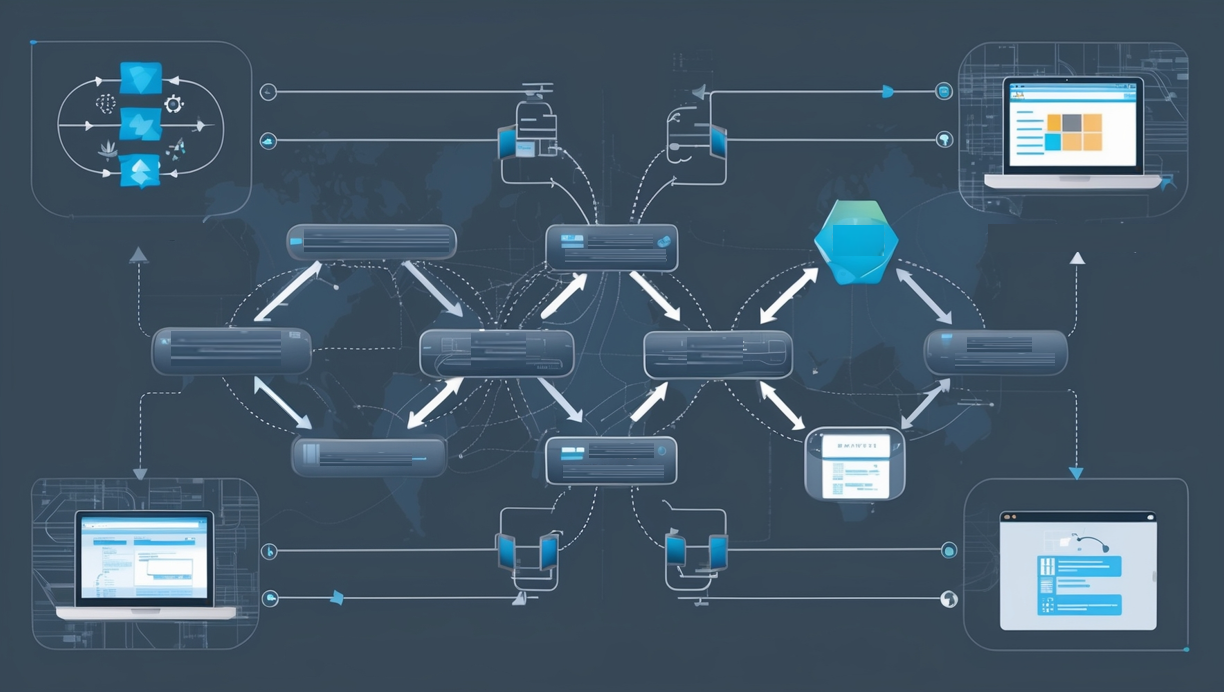Business process management and semantic technologies are shaping the future of organizational efficiency, offering innovative ways to streamline workflows and foster collaboration. By bridging the gap between traditional business processes and cutting-edge semantic tools, organizations can achieve higher precision and flexibility. This synergy is a game-changer for industries striving to optimize operations in a competitive, fast-evolving environment.
Modern businesses rely on well-structured processes to function efficiently. These processes often span multiple departments or even organizations, demanding seamless integration of various workflows. Traditionally, business process management focused on optimizing internal operations, but globalization and digital transformation have created a demand for collaboration across organizational boundaries. Tools like business process management systems (BPMS) have brought advancements, yet limitations remain in addressing heterogeneous systems and diverse operational needs.
Despite their potential, many organizations struggle to implement collaborative business processes (CBPs) effectively. The lack of common standards, incompatible data formats, and differing operational frameworks between partners often lead to inefficiencies and communication gaps. These challenges prevent businesses from fully realizing the benefits of interconnected workflows, resulting in missed opportunities and increased operational costs.
Without a cohesive solution, organizations face significant risks. Inefficiencies in process execution lead to delays, errors, and frustration among stakeholders. The lack of semantic understanding across systems can result in misaligned workflows, creating bottlenecks and duplicative efforts. Furthermore, businesses lose their competitive edge when they cannot adapt quickly to the demands of collaborative ecosystems.
Integrating business process management and semantic technologies provides a robust solution to these challenges. Semantic web services (SWS) enable precise alignment of diverse workflows by using ontologies to create shared understanding among partners. Techniques like "lifting" and "lowering" transform business processes into semantic formats and back, ensuring compatibility and efficiency. Tools such as OWL-S and WSMO empower organizations to design CBPs that seamlessly interconnect processes, regardless of technical or structural disparities. The result is an optimized, automated system that eliminates inefficiencies and enhances decision-making.
Organizations adopting this approach gain transformative advantages. By leveraging semantic technologies, businesses can save time, reduce costs, and foster deeper collaboration with partners. Enhanced interoperability allows companies to respond faster to market demands and maintain a competitive edge. The integration of these tools not only addresses current operational challenges but also prepares organizations for future advancements in automation and AI-driven decision-making.
Business process management and semantic technologies are paving the way for a new era of operational excellence. By adopting these innovative strategies, businesses can overcome traditional limitations, drive efficiency, and achieve greater collaboration across boundaries. Embracing this transformation positions organizations as leaders in their industries, ready to thrive in an interconnected and dynamic world.
Main Contents
- Introduction to Business Process Management (BPM): Overview of BPM principles, including the design, execution, and monitoring of business processes.
- Semantic Technologies and Web Services: Explanation of semantic web services (SWS), including their components, composition, and integration into BPM.
- Collaborative Business Processes (CBP): Discussion of how semantic technologies enable cross-organizational workflows and facilitate efficient collaboration.
- Techniques for Process Transformation: Insights into "lifting" (transforming business processes into semantic formats) and "lowering" (reverting them to operational workflows).
- Tools and Practical Applications: Exploration of tools like OWL-S, WSMO, and Maestro, along with use cases such as the "Carrier Shipper Process."
Key Takeaways
- Semantic technologies enhance BPM by enabling interoperability across diverse systems and organizations.
- Transformative techniques like "lifting" and "lowering" ensure seamless integration between business processes and semantic web services.
- Collaborative Business Processes (CBPs) leverage semantic tools to optimize workflows beyond organizational boundaries.
- Implementing SWS improves operational efficiency, reduces manual errors, and fosters better partner collaboration.
- Organizations adopting these approaches can achieve faster adaptability, reduced costs, and a stronger competitive edge.
This guide on business process management and semantic technologies offer CIOs and IT leaders a powerful framework to address complex operational challenges, ensuring efficient workflows, seamless integration, and enhanced collaboration. By leveraging the insights and techniques presented, they can transform their IT strategies to align with organizational goals and drive innovation.
- Optimizing Interdepartmental Workflows: The insights into business process design, execution, and monitoring can help CIOs streamline interdepartmental workflows, reducing redundancies and improving efficiency.
- Facilitating Cross-Organizational Collaboration: Semantic technologies enable seamless integration of processes with external partners, addressing the challenge of incompatible systems and fostering strategic alliances.
- Improving Decision-Making through Data Alignment: By utilizing semantic web services, CIOs can align disparate data sources, enabling more accurate and data-driven decisions.
- Reducing Manual Efforts and Errors: Techniques like lifting and lowering ensure smooth transitions between different formats, reducing the risk of errors and the need for manual intervention.
- Enhancing Scalability and Future Readiness: The document provides strategies for adopting semantic tools that not only address current needs but also prepare organizations for emerging technologies like AI and machine learning.

